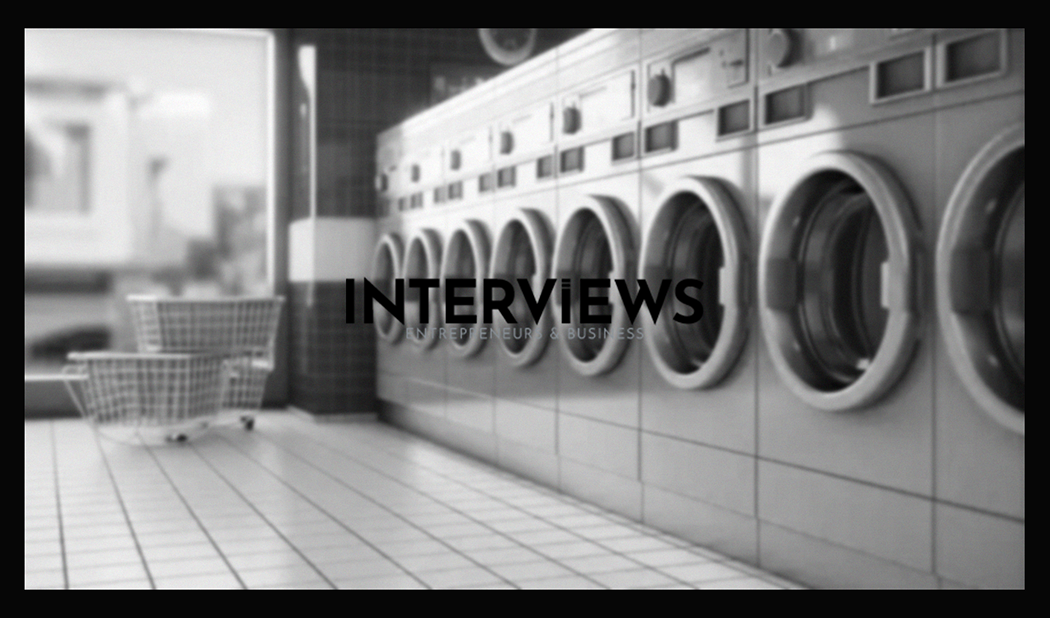Is Investing in a Laundromat Really a Clean Getaway to Profits? Let’s Sort it Out.
Thinking of small business ownership? You might be dreaming of sipping lattes while cash rolls in. A laundromat could be your ticket. Forget dingy basements. Expect serious profit potential. Let’s explore the financial details and operations of owning a laundromat.
I. Profitability and Financial Aspects: Making Cents Make Sense
The bottom line is crucial. So, how does a laundromat perform financially? You’ll likely be pleasantly surprised.
Profit Margins: More Than Pocket Lint
Here’s a number that might shock you: the average laundromat has a profit margin of 30-40%. Correct. In the unpredictable world of small businesses, that’s like hitting gold. It’s not just good; it’s a highly lucrative investment. Who knew washing clothes could be so profitable?
Return on Investment (ROI): Watch Your Money Spin
Laundromats generally provide a strong ROI, often higher than many other businesses. You’re looking at returns typically between 20% and 35% in the first year! Think about it: put your cash in a machine and see it spin out more money. The average laundromat can expect an ROI of 20-30%, based on the golden real estate rule: location, location, location.
Annual Revenue: Raking it in Yearly
A laundromat is not just making pocket change. The average annual revenue is $300,000. Those profit margins we discussed? They are enticing. Generally, data suggests that laundromats make between $200,000 and $500,000 annually. Quite a range, but it hints at impressive potential when managed well.
Monthly Income: Consistent Cash Flow
Monthly earnings? They vary by location, size, and operations. Smaller laundromats might see profits between $1,500 to $5,000 monthly. However, prime locations and larger setups could produce $10,000 to $30,000 per month, or even more. Self-service laundromats often earn $15,000 to $30,000 monthly. On average, expect around $5,000 to $25,000+ each month. This is decent for a business where customers serve themselves.
Cost to Open/Start: The Price of Admission
Let’s discuss startup costs. Starting a laundromat isn’t free. The initial investment typically ranges from $200,000 to $500,000. Depending on your market, costs could rise up to $1.2 million. Generally, budgeting $200,000 to $500,000 should cover initial expenses. This includes renting or buying space, renovations, equipment, and legal fees.
Factors Affecting Profitability: The Secret Sauce
What makes a laundromat profitable? It’s not just about putting machines in a room and hoping. Key factors include: a strong location (critical!). A balanced pricing strategy (too high can scare customers away; too low can cost you), and operational efficiency. A clean, maintained laundromat in a good spot will always have an edge.
Passive Income Potential: Making Money While You Sleep (Almost)
Can laundromats serve as a passive income source? The answer: yes. With efficient systems, a laundromat can indeed provide a reliable stream of passive income. Many investors regard laundromats as excellent side hustles. Remember, “passive” still requires setup and efficient operations.
Financing: Getting the Funds Flowing
Need help funding your laundromat? The SBA (Small Business Administration) loans are beneficial. They are ideal for financing equipment costs. Plus, SBA loans can finance purchasing real estate for your laundromat or renovating existing buildings. Specifically, SBA 504 loans are beneficial. They can cover real estate acquisition, construction, renovation, or equipment buying. The SBA is eager to support your laundry venture.
II. Success and Failure: Sorting Fact from Fiction
Let’s be honest. Not every business succeeds. But laundromats often show favorable odds.
Success Rate: Beating the Odds
Here’s a statistic to ease your mind: laundromats enjoy a high success rate of approximately 95% after five years. This figure is immensely better than the general small business landscape. Some sources quote a 94.8% success rate. A Gallup poll found that 66% of potential entrepreneurs fear failure. Laundromats give a strong reason to enter the market. U.S. laundromats boast that impressive success rate with those sweet profit margins.
Recession Resistance: Weathering the Economic Storm
Laundromats are resilient. They’re termed essential businesses. Regardless of the economy, people need clean clothes. Laundromats fulfill this need. They maintain stability during economic downturns. In hard times, fewer customers may visit dry cleaners, but laundromats continue operating as people still require clean clothes.
Reasons for Failure: Steering Clear of Pitfalls
Despite high success rates, laundromats can fail. The main problem? Bad management. Every business needs focused management and smart decisions. Neglecting maintenance, avoiding cleanliness checks, or ignoring customer needs can lead to issues. Even a straightforward business like a laundromat requires effective leadership.
III. Operational Aspects: The Nuts and Bolts of Cleanliness
Beyond financials, let’s consider operations. How much effort is it really?
Labor Costs: Lean and Mean Operations
A key advantage of laundromat ownership is its low labor costs. Most laundromats are self-service, meaning reduced payroll expenses. This factor boosts profitability and makes laundromats attractive, offering profit margins of 20-35%. It’s beneficial.
Management: Not Entirely Hands-Off, But Close
You might desire a hands-off business. A laundromat isn’t completely that. It’s not a completely automated money tree. It requires attention and management. Still, remote management systems simplify operations significantly compared to running a restaurant. Think “hands-off-ish.”
Scalability and Flexibility: Room to Grow (or Stay Small)
Laundromats are flexible businesses. They can operate with varying levels of involvement, suiting different lifestyles and goals. Their operations can be scaled up or down based on demand. Start small, prove the concept, or maintain a steady stream of income. The decision rests with you.
Additional Revenue Streams: Beyond the Wash and Dry
Want to enhance profitability? Look beyond washers and dryers. Laundromat owners can add ancillary services. Consider dry cleaning or wash-and-fold options. Partner local businesses like hotels or salons to create additional streams. Think of your laundromat not just as a washing hub but as a community service center.
Number of Machines: Finding Your Fit
How many machines should you have? It varies. The quantity should align with local demand. Consider the target customer base and trends in the area before final decisions.
Size of Space and Customer Demand. Start with 2-3 washers and dryers per 100 square feet. This can change. In small towns, five or six machines may suffice. Match capacity with your community’s needs.
Managing Remotely: Monitoring from Afar
Can you manage a laundromat from a distance? Yes, to an extent. Self-service laundromats can be managed remotely. Tools like LaundryPulse help you monitor operations. Still, some on-site supervision is necessary. Cleanliness and equipment condition matter. Address customer issues quickly. Remote management aids but does not replace hands-on attention.
IV. Starting or Buying a Laundromat
Ready to start? You have two choices: build from scratch or buy an existing laundromat. Both paths have positives and negatives.
Starting from Scratch: Key Steps
Building your laundromat requires essential steps: market research, securing funding, choosing location, obtaining permits, purchasing equipment, and implementing marketing strategies. Focus on:
- Market Research: Do not skip this!
- Funding: Have a financial plan.
- Location: Important!
- Permits: Get your paperwork right.
- Equipment: Use quality machines.
- Marketing: Attract customers! How?
- Management: Be prepared for the long haul.
Buying a Laundromat: Quick Entry
Buying an existing laundromat can streamline ownership. Key steps include:
- Conduct Market Research: Always necessary.
- Evaluate Locations: Is it the right spot?
- Contact a Broker: They can assist with negotiations.
- Financial Analysis: Numbers matter. Check them.
- Due Diligence: Verify all legal aspects before signing.
Cost of Purchase: Down Payment
Buying a laundromat often means a down payment. Expect to pay 25%-40% of the price for a loan. Include this in your budget.
V. Location: Setting Up
Location matters immensely. Let’s explore ideal locations.
Ideal Characteristics
A choice laundromat spot is precious. Look for:
- Main Road Access: Visibility is critical.
- Clear Visibility: Spot it easily from the road.
- Parking and Access: Customers need easy entry.
Surrounding Businesses
Who are your neighbors? Certain businesses pair well with laundromats. Grocery stores, convenience stores, auto parts, and check-cashing stores draw the same crowd. Evaluate their clientele for insights into your target market.
Demographics Matter
Understand demographics well. Target areas with many renters, students, or low-to-middle-income families. These groups often use laundromats due to a lack of home appliances. Align your location with the demographic in need.
VI. Risks and Challenges
No business runs smoothly. Laundromats face risks and challenges, including:
- Upfront Costs: Starting requires cash.
- Maintenance Needs: Machines break; it’s common.
- Market Saturation: Is there competitors?
- Location Dependence: Avoid bad spots.
- Utilities Costs: Water and energy add up.
- Changing Tech: Stay current.
- Theft and Vandalism: Ensure security.
- Seasonal Changes: Expect fluctuations in business.
- Flexibility Required: Adapt to unexpected situations.
Both theft and vandalism are real threats. Laundromats need security measures to protect their investments.
VII. Legal Matters
Now, let’s address crucial legal aspects.
LLC Formation: Asset Protection
While not mandatory, forming a limited liability company (LLC) is wise. An LLC is often the best structure for laundromats. It shields personal assets. Think of it as a protective barrier for your savings. It is worth consideration.
Permits Needed
Permits are essential. Be prepared for:
- Fire Safety Permit
- Wastewater Permit
- Health Permit (from the local health department)
- Sign Permit
- Business and Licensing Requirements
This sounds tedious, but handling permits is crucial for legality and avoiding future fines.
VIII. Investment Characteristics
Is a laundromat a wise investment? Here are key reasons:
- High ROI: Numbers show success.
- Flexibility: Adapt to your life.
- Scalability: Grow as you can.
- Manageable Cash Flow: Enjoy stable income.
The high ROI, success, and flexibility combine into an appealing choice for investors. If you want a business that withstands downturns and offers solid returns, consider investing in a laundromat. It may not be entirely hands-off, but with proper management, it can be a rewarding venture.





